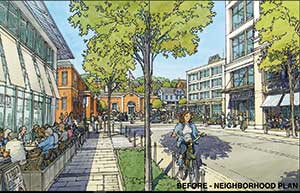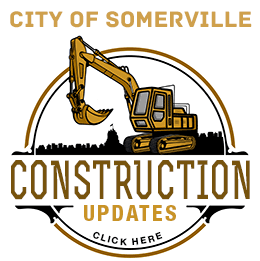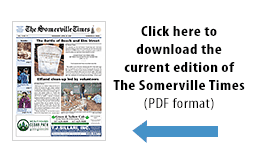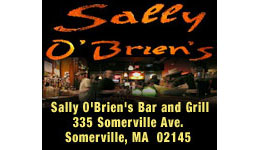By Tim Talun AIA, Seth Hoffman, in behalf of Union Square Neighbors
Renee Scott, Victoria Antonino, in behalf of Green and Open Somerville
(The opinions and views expressed in the commentaries and letters to the Editor of The Somerville Times belong solely to the authors and do not reflect the views or opinions of The Somerville Times, its staff or publishers)
Four years ago, this season found city officials and advocates of wise development enthusiastically hopeful in anticipation of what Union Square’s redevelopment could bring. An overflow crowd packed the Somerville Theatre to see a film about planning for livable cities, and Mayor Curtatone affirmed our city’s “people-centered approach as the focus of city design” as he introduced the film.

“’Before’ images are from the Neighborhood Plan. ‘After’ image(s) show the Coordinated Development Plan’s approximate impact on increased building footprints.”
Today, the hope for Union Square development that will strengthen the bonds of community, improve health and wellbeing, enhance the quality of life, and economically sustain us is increasingly replaced by disappointment.
Last Thursday the Somerville Planning Board approved a Coordinated Development Plan (CDP) for 2.4 million square feet of new construction. Proposed by Union Square’s Master Developer, US2, it falls short of delivering on the bold aspirations of this community for its future.
It was approved despite clear deficiencies, including lacking the basic information and analysis required to evaluate its own merits. It incorporates glaring inconsistencies with Somerville’s Comprehensive Plan and Union Square’s Neighborhood Plan. Although it will literally shape Union Square’s future and Somerville’s fiscal health for a century, the Planning Board and staff rushed approval without attempting to work through these shortcomings
Planning Board Chairman Kevin Prior insisted that after years of Union Square discussion and planning, it was time to vote. But the Planning Board has a responsibility to evaluate whether what is being proposed is consistent with the plans and regulations which embody the community’s shared wisdom and vision for the future. Decisions should be made based on this, not a desire for expediency.

Most Somervillians will never set foot in the proposed new residential or work space. What they will tangibly experience is the public realm, the common ground where diverse citizens come together to experience their city and create their community. It is what transforms space into place. It can also help to increase or reduce crime, public health, and shape the experience of community —three other tangible impacts.
The Union Square Neighborhood Plan anticipated this. It is far from perfect, but it was supposed to be the starting point for US2’s Coordinated Development Plan. Instead of moving forward from this starting point, the CDP retreats. For example, it
- Excludes or compromises such rudimentary information as circulation diagrams, building footprints, setbacks, heights, and three-dimensional perspectives.
- Purports to be a coordinated development plan, but does not coordinate the City’s public-realm streetscape planning with US2’s plans.
- Appears to erase the broad sidewalks and thoughtful setbacks intended by the Neighborhood Plan to create interactive spaces where social and commercial forces can mix to create a vibrant neighborhood center rather than a collection of anonymous pass throughs.
- Expands building footprints to encroach on viable public space in order to increase building space by 100,000 square feet over what was anticipated when the Redevelopment authority selected US2.
- Includes no indoor civic space, such as a community center, branch library, or arts center—amenities that community residents and some city officials have advocated for years.
- Reneges on US2’s commitment to collaborate with the community in shaping and locating a 27,000-sq.-ft. neighborhood park, siting it instead on city-owned land next to US2’s proposed parking garage. US2 is required to build this park within a specific timeframe, and locating the park on city-owned land instead of a privately-owned property transfers risk onto the City while cheating the community out of determining how our limited open spaces can best serve all residents.
So, we have arrived at a crossroads. Words like “livable city” and “people-focused design” are meaningless without actions that  will make them a reality. The community has been patient and remarkably engaged during the last four years of planning, but it is time to deliver on goals and aspirations through the actual details of what is being proposed.
will make them a reality. The community has been patient and remarkably engaged during the last four years of planning, but it is time to deliver on goals and aspirations through the actual details of what is being proposed.
Conditions attached to the CDP’s approval appear to leave the door open to work through options for neighborhood park(s) and indoor civic space(s). The City and US2 must commit to following through on this if they are to keep faith with the public. That includes devoting staff time and design team resources to it.
The terms of four of the six Planning Board members are currently expired. Many in the community questioned whether an expired Board should be voting on a plan of this significance, calling for these members to be reappointed or replaced prior to a vote. These calls were ignored, but this must be addressed prior to a vote on design and site plan approval for the D2 block, which includes the 24-story residential tower and plaza next to the future Green Line stop.
Somerville prides itself on being an innovative and creative city. But the development review processes currently in place fail to encourage good design or create accountability around community feedback. It is the City’s responsibility to do better, and US2’s responsibility to deliver on the high-caliber design they promised when they were selected.
 In the next 30 days we call on the City to set out a clear, iterative process for review of the D2 block that creates real accountability for community feedback during design instead of simply asking for feedback after decisions have already been made.
In the next 30 days we call on the City to set out a clear, iterative process for review of the D2 block that creates real accountability for community feedback during design instead of simply asking for feedback after decisions have already been made.
Wise development can bring us fiscal health and community benefits. But it is also about shaping our lives and the quality of our community for generations to come. While there is frustration about the shortcomings of the CDP, nothing is built yet; if changes are made to get this right, it’s not too late to deliver on the promise that many were excited about four years ago.















Anyone who sat through that film and believed it hasn’t attended any neighborhood development planning/zoning meetings in recent years. What they have been doing in small ways on little streets around the city for years they are now doing to Union Square. Anyone who thinks they are creating a ‘neighborhood’ in Union Square is sadly mistaken. They are destroying a neighborhood. I haven’t even followed it closely but it follows the patterns of many planning/zoning meetings I’ve attended. Whatever is best for the developer will happen in the end. (“Our job is to make the neighbors comfortable with the plan” – Kevin Prior) It will become, at best, Kendall Square, and I don’t know anyone who would refer to that as a neighborhood. And for this we will lose century old architecture (where is the Historical Commission?), as well as residents and businesses. Where is the BOA on this? Someone should be contacting the state regarding people whose term has expired placing votes on a city board.
Who is “they,” Mr. Bonanza? For over three years the city, first with the CAC and then with the LOCUS committee, crafted what became the “Neighborhood Plan” Shelton & Co cite. Then the self-appointed, unelected Union Square Organizing Committee spent a year debating their bylaws and electoral system, only to produce a vote last month that’s one tenth of that a few weeks before for Wards 2 and 3 aldermen. “They” are many more than just the city and US2.
Meanwhile, foundations and other cities have turned to Somerville for models of precisely the kind of participatory policy making Shelton and even Bonanza describe. Those models would include both Union Square Neighbors, Union United, Union Square Main Streets, Green and Open Somerville, the Arts Council, Council on Aging, and others, as well as a team of students – from Tufts, MIT, Harvard, and elsewhere – to explore what options are realistic both in time and funding.
And the city has made some great strides in building support for a Transfer Fee to sponsor some of those options. The new Metro Mayors’ Coalition is a perfect venue for testing options ranging from limited equity ownership for city and long term residents to support for incubators or city-wide net neutrality for residents and startup businesses. Some of those “innovations” – long known, but relatively ignored in our city – could dramatically change affordable housing, incubator businesses, and current retail and other employment.
Before you blame too much on “them” let’s create an “us” that includes a broader base of more “thems.” We are all going to live with whatever we allow, so it should be more of “us” who join in those discussions. And be much more careful of that plural pronoun.
to the author(s) of this article.
Were you actually at the meeting?
The approval at that meeting was required for the developer to proceed to the point of developing the buildings to the point you can see what the actual foot prints will be. Most of what you are complaining about here are things that are discussed in the next phase of the program, which, of course, only comes after this approval process.
So are you being purposely inflammatory just to do so, or do you just not understand the process you are condemning?